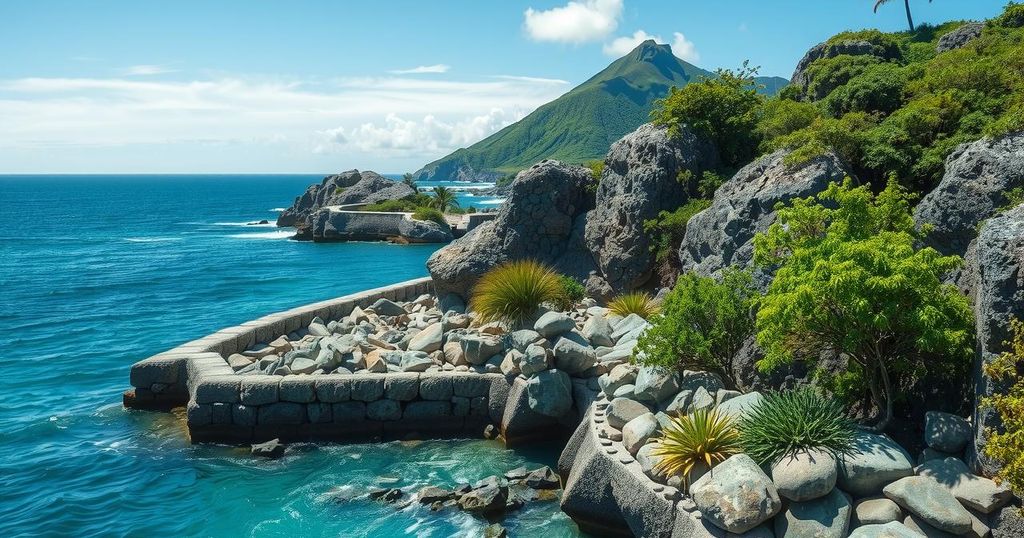Serua Island Faces Climate Crisis: A Fight for Survival

Serua Island in Fiji is confronting severe climate change impacts including rising sea levels and extreme weather. Despite historical significance, the seawall built in the ’80s has been ineffective, contributing to flooding and soil instability. Villagers are proposing urgent projects for better coastal defense and drainage, adamantly refusing relocation as an option, emphasizing their deep ties to the land.
As we grapple with climate change — indeed, the biggest issue of our era — the situation has evolved dramatically since the Paris Agreement was signed in 2015. Back then, the U.S. was a strong advocate for climate action, but that’s changed. With President Donald Trump’s isolationist policies, global cooperation has taken a hit, diverting attention to other pressing matters like tariffs and wars. Adding to this mix is the increasing unpredictability of extreme weather events, as polar ice melts and ocean levels rise at alarming rates.
Located near Viti Levu, Serua Island in Fiji is feeling the heat of these global changes more acutely than one might think. Once the paramount chief’s home, and culturally significant to the indigenous population, the island now faces constant threats from encroaching seawater. It’s a tough reality for about 100 households remaining there, many of whom have moved to the mainland at Talenaua for safety and resources.
Waisale Natuna, a village elder and former headman, guided our team through the island’s troubled shoreline. He described how the family structure has shifted, with one sibling often staying to manage the family home while others seek a more stable life on the mainland. The history of destruction isn’t new: Natuna recalled catastrophic floods from cyclones in the ’80s that devastated schools and homes. That was when the imperative for action became starkly clear.
The most notable government response has been the seawall built decades ago, although some residents have voiced concerns about its effectiveness. Joseva Robanakadavu, the spokesperson for the chief, noted that the design may have worsened flooding during high tides. There are no drainage outlets, leading to ponding and soil instability — problems compounding each season.
Natuna mentioned how heavy rains have caused landslides on the island’s two prominent hills, Navua and Dakuiserua, both historically significant sites. Rising waters now threaten the bases of these hills, underscoring the urgent need for soil stabilization efforts. “We’re going to plant vetiver grass to hold the soil together,” he explained, emphasizing the necessity of proper coastal management.
The island’s eastern part remains troublesome, lacking sufficient sea barrier measures. Natuna pointed out that previous efforts were just stop-gap, stating, “They’re not going to last.” He argues for a comprehensive seawall to safeguard against rising tides, alongside a coordinated drainage system.
In discussing future projects, Natuna highlighted previous proposals that included elevating island land and installing a seawall, as well as creating a dedicated pathway to the mainland for better access. With merely a short boat ride or a 20-minute stroll during low tide separating them, transportation isn’t an insurmountable challenge, but it needs addressing nonetheless.
Relocating is off the table for the residents. The deep-rooted historical connection they have with Serua cannot be overstated. Natuna stated, “Our identity, bloodlines, and the connection to the land and sea — this is who we are. It’s not just the chief’s home; it encapsulates our very essence.”
While they communicated their preservation plans to the government, he noted that the village isn’t waiting around for assistance. They’re determined to protect their home through whatever means necessary.
Serua Island, a historically and culturally rich area for the indigenous Fijians, is facing grave threats from climate change, specifically rising sea levels and extreme weather. The seawall built decades ago has not proven effective, leading to flooding and land instability. Villagers are advocating for urgent solutions, such as a comprehensive seawall and drainage improvements, to secure their homeland. Relocation is not an option for residents, who wish to preserve their rich connection to the land. They’ve pledged to take action without waiting for governmental aid.
Original Source: www.fijitimes.com.fj







